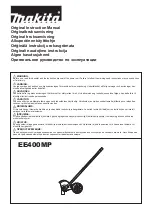
2 - STANDARD FACE-BOW REGISTRATION PROCEDURE
FIG. 1
FIG. 2
FIG. 3
FIG. 4
FIG. 5
FIG. 6
FIG. 7
2.1 - DENTATE AND PARTIALLY DENTATE PATIENTS
a) By using bite registration material (“godiva”, wax, among
others) three points on the fork are made: one frontal
point, in the exact centre of the fork, and two points at the
back, one at each semi-arch of the fork (fig.1).
b) Position the bite fork so that the midline of the fork handle
is aligned with the midline of the maxilla and place it on the
upper teeth, holding it firmly in place until the registration
material hardens (fig. 2). Only a small amount of
registration material should be used since the purpose is
to record only the cusp tips of the teeth while keeping the
fork as immobile as possible (fig. 3).
Afterwards it is advisable to try the cast on the registration
to check its stability (absence of clearance) (fig. 4).
Note:
Alternatively, a pre-impression of the teeth can be
made on the upper model and then refined in the mouth.
In the case of patients who have partially jagged teeth, it is
important to locate points that hold the fork stably in place,
despite the missing teeth and the points used for the
transfer.
c) Recline the patient in the chair to reduce the induction of
tensions on the fork set and face-bow asking him to keep
the fork in the same position, supporting the thumbs
against the maxilla (fig. 5). Take the face-bow to the
patient and introduce the fork fixation assembly into the
bite fork handle, assuring that the wing nut is upside down
(fig. 6). Then carefully insert the face-bow earpieces into
the patient's external auditory meatus as if you were
putting a stethoscope into his ears (fig. 7).
2
Содержание 4000-S
Страница 1: ...www bioart com br Technical Instructions Manual FACE BOW AND ARTICULATOR...
Страница 21: ......






































